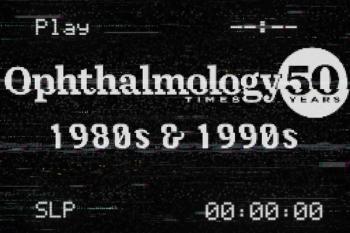
High-definition aberrometer represents state of the art for performing wavefront-guided LASIK
Wavefront-guided LASIK using the iDESIGN Advanced WaveScan Studio System, STAR S4 IR Excimer Laser System, and the iFS Laser (all from J&J Vision), is providing unsurpassed outcomes for the treatment of myopia, hyperopia, and mixed astigmatism, according to Jay S. Pepose, MD, PhD.
Wavefront-guided LASIK using the iDESIGN Advanced WaveScan Studio System, STAR S4 IR Excimer Laser System, and the iFS Laser (all from J&J Vision), is providing exceptional outcomes for the treatment of myopia, hyperopia, and mixed astigmatism, according to Jay S. Pepose, MD, PhD.
Wavefront-guided LASIK using the iDESIGN Advanced WaveScan Studio System, STAR S4 IR Excimer Laser System, and the iFS Laser (all from J&J Vision), is providing unsurpassed outcomes for the treatment of myopia (with and without astigmatism), hyperopia (with and without astigmatism), and mixed astigmatism, according to Jay S. Pepose, MD, PhD.
“LASIK has come a long way since it was first introduced thanks to a number of hardware and software developments, and the introduction of the iDESIGN system has been an important step for moving us forward on the path to greater safety, better efficacy, and higher patient satisfaction,” said Dr. Pepose, who is the medical director of the Pepose Vision Institute and professor of clinical ophthalmology at Washington University School of Medicine, St. Louis, Missouri.
“My outcomes were excellent when I was performing CustomVue LASIK with the WaveScan aberrometer,” he added. “There is no question, however, that they have improved since I began using the iDESIGN aberrometer. Having more data to share with patients gives me even greater confidence when I discuss wavefront-guided LASIK as a refractive surgery option.”
The iDESIGN system captures five types of measurements, including
iDESIGN performance
Dr. Pepose explained that its high-definition Hartmann-Shack sensor is one feature that truly sets it apart from other systems. The iDESIGN System performs up to 1,257 micro-refractions over a 7 mm diameter, which means it has fivefold higher resolution than that achieved with a standard Hartmann-Shack wavefront sensor.
“With this increased sampling, the iDESIGN System provides a more accurate refraction and more accurate wavefront data, and it can capture the wavefront in eyes with higher levels of aberrations,” said Dr. Pepose.
“These benefits translate into better outcomes in routine cases and are particularly important for cases involving more complex eyes, he added.”
Outcomes achieved in the FDA clinical trials leading to the approved indications for wavefront-guided LASIK using the iDESIGN System and STAR S4IR excimer were good. In treating myopia with or without astigmatism in patients with up to -11 D spherical equivalent (SE) and up to -5 D cylinder, 83% of patients achieved 20/20 or better uncorrected visual acuity(UCVA) at 6 months and more than half of the cohort achieved UCVA of 20/16. In the trial of mixed astigmatism ranging from 1 to 5 D, 92% of eyes saw 20/20 or better at the 3-month follow-up visit.
The hyperopia trial treated eyes with SE up to +4 D and up to -2 D of cylinder, and at 12 months, two-thirds of treated eyes had UCVA of 20/20 or better. Other studies with the iDESIGN System show even better visual acuity results, with nearly all eyes achieving 20/20 or better vision.
“The clinical trials also found high levels of patient satisfaction, and that is consistent with what I am seeing in my practice,” said Dr. Pepose, who was an investigator in the FDA clinical trials.
“Patients are also getting better low contrast visual acuity, and more patients have less than 0.5 D of residual astigmatism. With the better refractive and functional outcomes, my enhancement rate has also gone way down, decreasing from about 4% before the iDESIGN System was available to less than 1% now.”
Better astigmatic outcomes
Dr. Pepose said he has been particularly impressed by the increased accuracy he is achieving with correction of astigmatism. He attributes this performance in part to better wavefront measurements, but also to what he has found to be a higher iris registration capture rate.
“Since transitioning to use of the iDESIGN System, registration at the time of surgery is achieved in 97% of cases, and it occurs more quickly than before, which is important for minimizing the time the flap is raised,” he said.
Compared with its predecessor, the iDESIGN System is able to capture a wider range of pupil sizes, from 4.0 to 9.5 mm, and has a threefold higher dynamic range. It is also approved for the treatment of younger patients.
“Now anyone aged 18 years and older can be treated on label,” said Dr. Pepose.
Disclosures:
Jay S. Pepose, MD, PhD.Dr. Pepose is a consultant for AcuFocus, Bausch + Lomb, and J&J Vision.
Newsletter
Don’t miss out—get Ophthalmology Times updates on the latest clinical advancements and expert interviews, straight to your inbox.



















































.png)


